Second Koala Field Day
As we drove along the road into the campground adjacent to our field site on Wednesday, there were a few vehicles pulled off the road in various spots and their passengers were out with cameras and binoculars. They had spotted a koala in the trees. Vicky, our driver and Des’s assistant for the trip didn’t stop. When we pulled up to our cabin, there was a koala in the tree right next to it, less than 5 meters from where we stood. The four Americans in the group got out our cameras. That feels like a very long time ago.
Yesterday began with four of us radio tracking the tagged animals. I taught Kelly, a pretty, spunky, highly competent and very sweet teacher in a private boy’s school in NYC, how to track, and we found all 10 of our assigned animals in an hour. We then assisted the other team in tracking down two more animals, one of which had migrated some distance away from where he usually hung out.
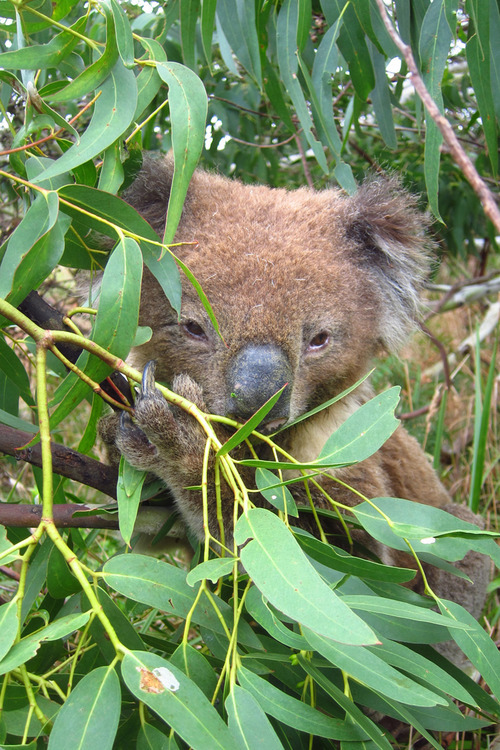
In between some of the tracking, we were called away to watch Des and other members of our team catch two of the radio-collared females so that their health could be assessed and new GPS chips could be put on their collars. The first “little girl,” Lucie, is Des’s favorite. Des extended a pole with a noose on the end up into the tree, while two other people held up long poles with “flags” (plastic bags and pieces of blue tarp) and waved them in front of Lucie’s face. When Lucie backed up to a convenient position, Des slipped the noose over her neck (it isn’t tight and won’t hurt her) and the flaggers backed her the rest of the way down the tree.
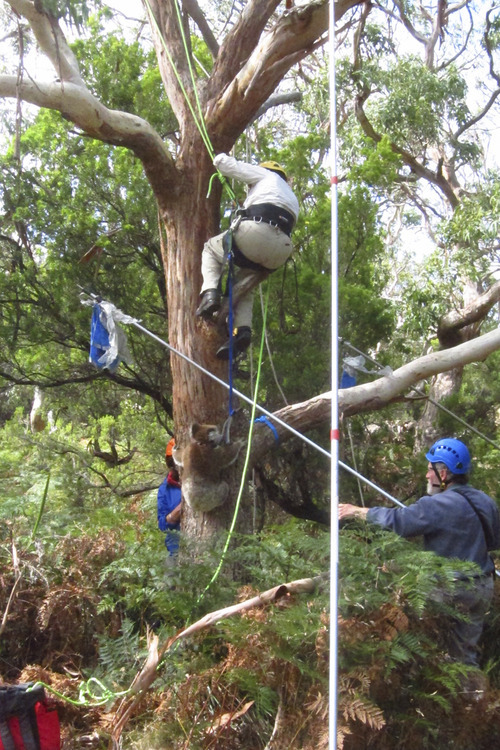
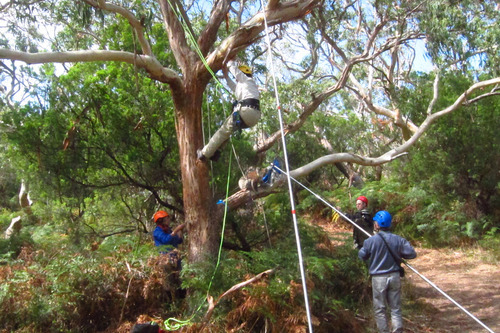


Once she was near the ground, Des was able to grab her, and put her into a big burlap sack. Once in the sack, Des could use her knees to position Lucie on her stomach inside the sack, straddle her for control and let her settle. After a few minutes, Des exposed Lucie’s neck while keeping her face covered, removed the old collar, replaced the electronics, replaced the collar, positioned the antenna, and released her. Easy peasey! Lucie was so compliant, three volunteers got to practice the technique required to lay her down, calm her, and find her neck.
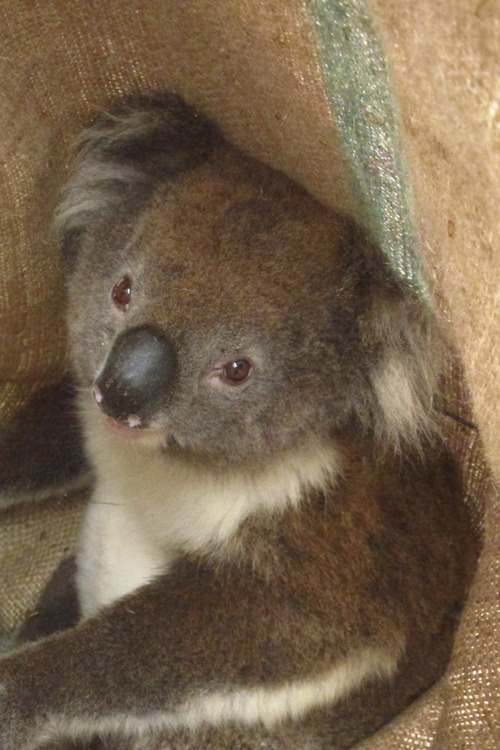
Lucie never seemed panicky, and blithely went back up the tree when she was let out of the bag. I checked to make sure she was beeping at the right frequency (if the transmitter isn’t turned on, the whole procedure was useless!) and we went on to find more koalas.
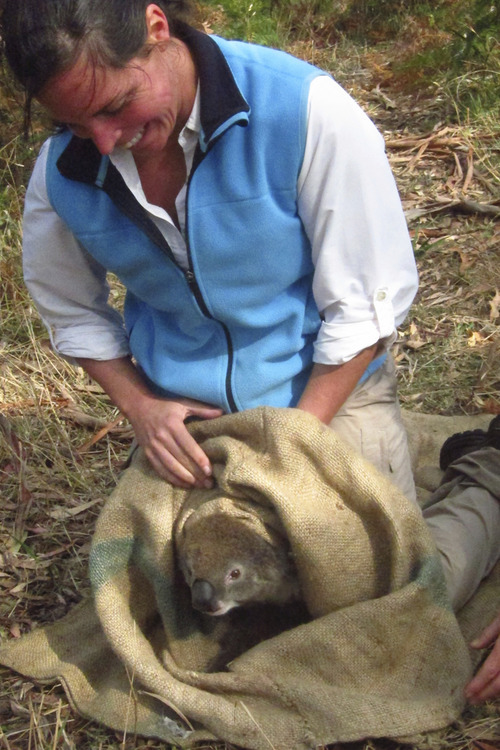
Sally put up a bit more of a struggle, and was a little stressed, by the experience. Nevertheless, when released, she hung out on the ground for a minute or two, ambled over to a different tree, climbed a few meters, stopped to check us out, then went back up to eat and snooze as all koalas do. We ended the morning capturing and collaring Frank. Our experience with the two females in no way prepared us for the bellowing and fighting that Frank exhibited. Des has captured him many times before, and each time is a nerve-wracking battle. This was absolutely no exception, and Des sustained a scratch on her arm from Frank’s claw-tipped thrashing limbs. When the dust and fur had settled, the score was biologists 1, koala 0. Frank had a new GPS device and an accelerometer. More on that later.
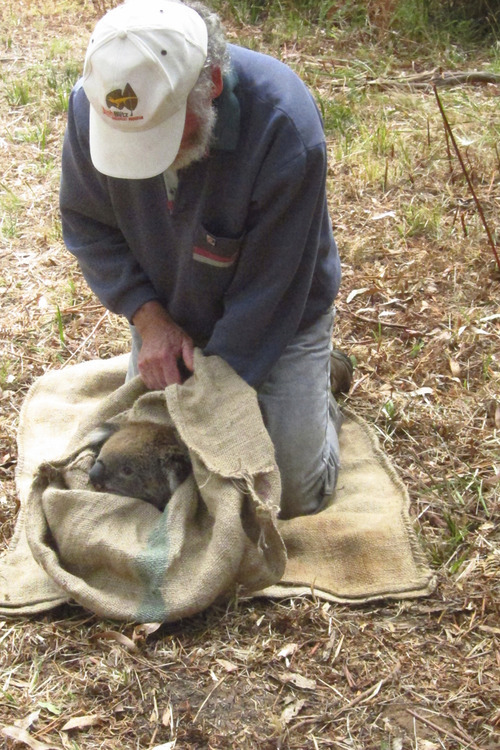
After lunch. we worked as a group to set up 20 infrared motion-triggered cameras at various places in the brush, half in the heavily human-altered area managed by the owners of the campground, and half in the adjacent, relatively pristine national park. We positioned and staked down little bait canisters within the focal plane of the lens. We’ll see who came to visit when we collect them and download the photos at the end of the trip. There are any number of tiny marsupials and rodents, as well as larger opossums, quolls, and foxes (introduced) that could pay the bait canisters a visit.
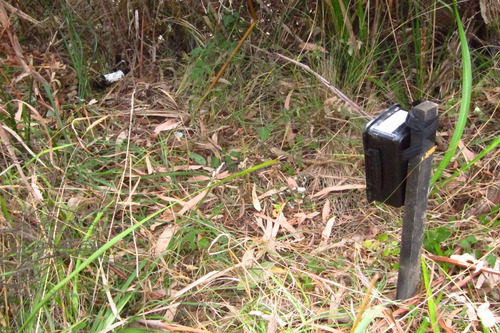
Kelly and I were in charge of dinner, so while other team members entered data and organized gear, we made a mega batch of squash, chicken, spinach, and mushroom risotto on a gas stove that puts out about no heat. I’m wondering if it’s a propane stove, because getting anything to actually cook was a challenge. Nevertheless an enormous amount of food was consumed, and appeared to be enjoyed by all.
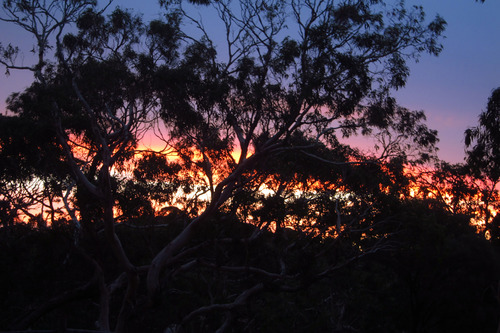
The final event of a long day was spot lighting. To me the term has negative connotations because it conjures up images of drunken hunters beaming headlights into the eyes of deer, and then shooting them. Our version, however, was much more benign, entailing scanning the surroundings with powerful LED flashlights, and keeping a record of the wildlife spotted. After watching a beautiful sunset from the top of the hill,four of us walked much of the area we had been working in all day (fortunately Des and Jo know it well, because Krystal and I were completely disoriented in the dark). We saw the yellow gleam of the eyes of quite a few koalas (some of which were collared and Des knew them well), a ring tailed possum, and a tawny frogmouth. I hope I have a chance to make another evening excursion before the expedition is over. There’s so much more I want to see!
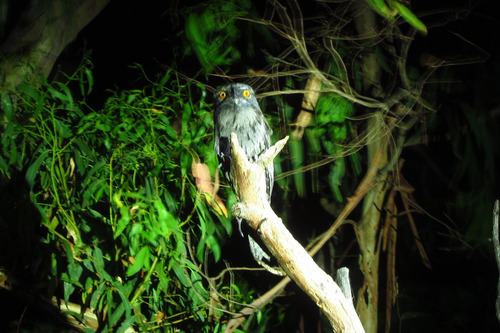
Tomorrow is another long day, so I’d best be getting to sleep.